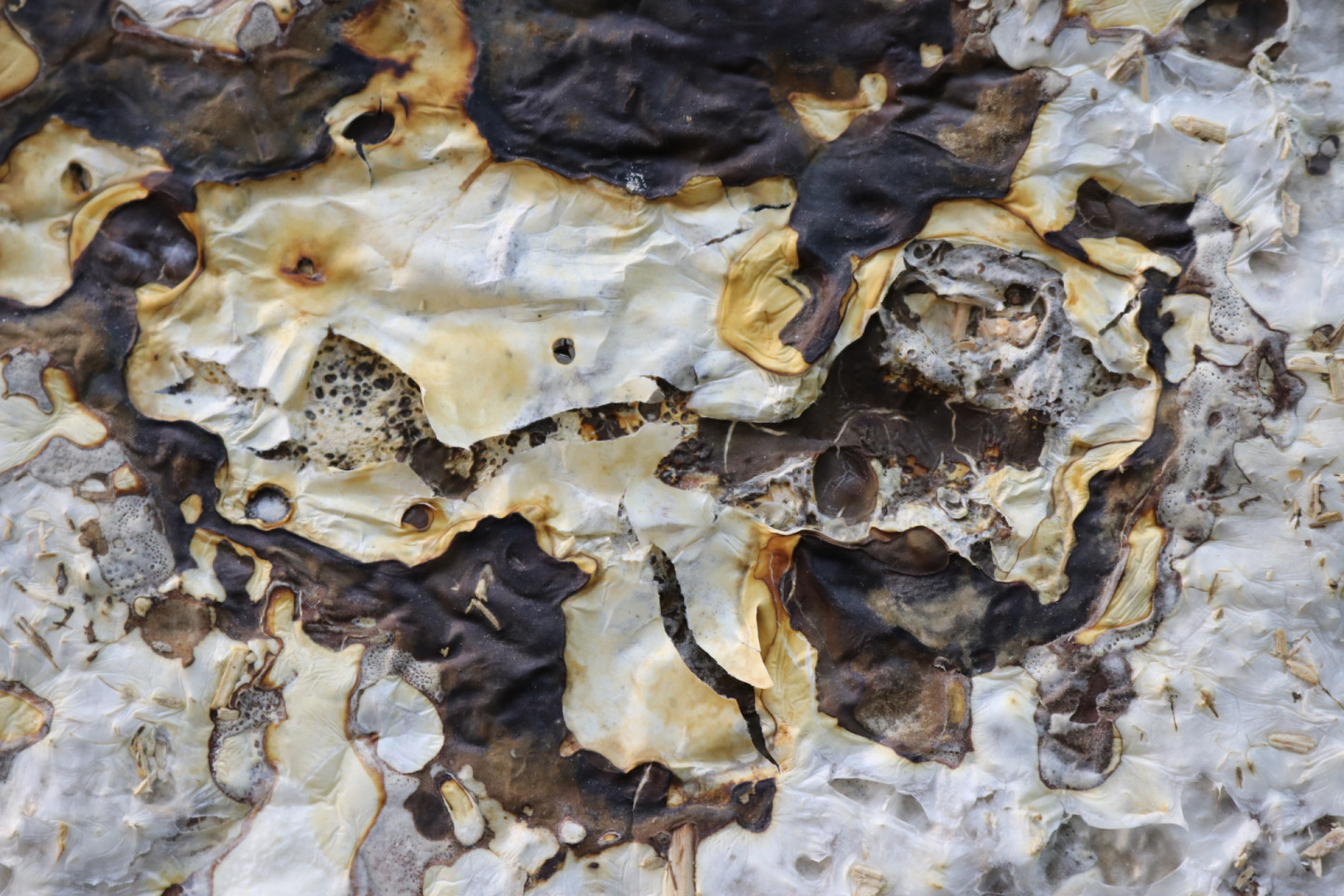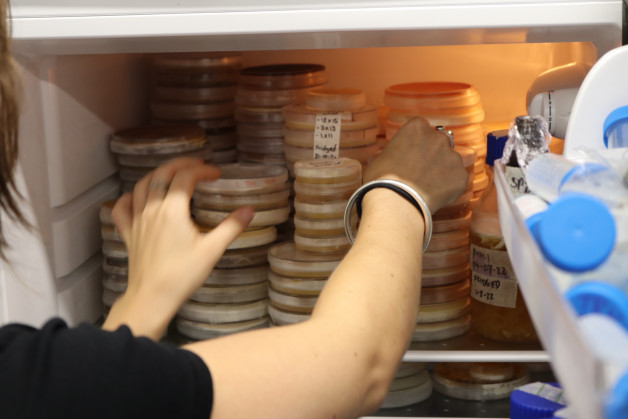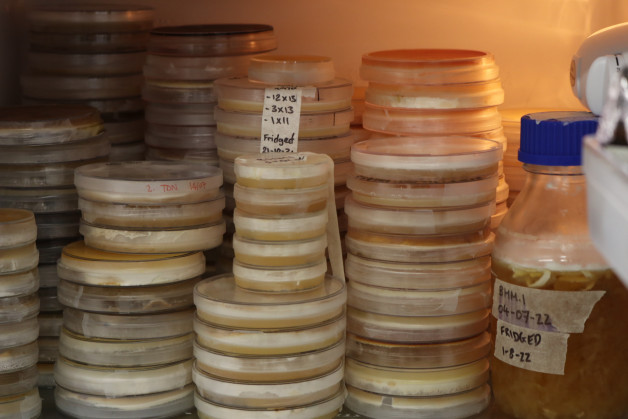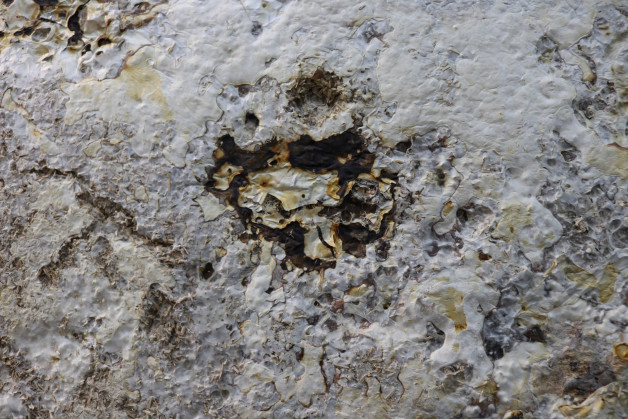Biohm is a research and product development company. Their focus is allowing nature to lead innovation and revolutionise construction to create a healthier, more sustainable, built environment. I spoke with Oksana, the director of design, about the implementation of bio-materials, the future of the construction industry, and the paradigm shift that must take place in order for us to develop a symbiotic, rather than parasitic relationship with nature.
Maria: Could you speak a bit about your practice and what drove you to wanting to develop sustainable materials?
Oksana: I’m Oksana, the director and designer of Biohm. Biohm is a research and product development company. We believe in the power and inspiration that can be found in nature, so we allow nature to lead all of our innovation. We strive to revolutionise the construction industry and create a regenerative built environment. One of the biggest things that drove us into development was the very complex and global challenge that we're all facing today, the climate crisis. It's urgent, and it's large. It requires a paradigm shift and a different way of looking at the problem, or searching for solutions. That was the inspiration and motivation to do things differently, starting with something that's at the core of our society and industries: the materials with which things around us are made of.
M: Working within that industry, what are some assumptions about sustainable design?
O: Some of the most common myths, or misconceptions that we have experienced are to do with whether bio-based and sustainable materials can really match what we're used to as an industry. Can they do as well as the traditional synthetic options on the market? It's usually to do with performance. Can a mycelium panel be as thermally insulating as conventional alternatives? It's to do with durability as well, people have a preconception that bio-based materials might degrade all of a sudden.
Another factor that can throw people off is workability. Can you easily engage with these new materials? Do they work in the same way? Can you put a new material onto the CNC cutter?* The answer to all of these misconceptions is yes, yes, and yes. A lot of the materials that we've developed to date are developed with the industry and all of these parameters in mind - so they perform just as well, or better. They're workable in the way that we're used to, and they are as durable as any other products. At the end of the day it's only the making process that is different. I guess it's about perspective.
M: What do you think is key to getting that shift going, to helping people understand the potentials of bio-materials?
O: The shift is in perspective, and perspective is a really interesting topic. We must deal with our awareness and our understanding of ourselves. I think humanity is a toddler species in comparison to the rest of biodiversity. But although we have been around for a very short period of time, in comparison to mushrooms for instance, we have managed to forget that we are an integral part of nature. I think once we go back to a really deep understanding and connection with the natural world, that will then make things much easier. All of a sudden, all of the preconceptions or challenges that we think we have, we won't have anymore because we will think and look at things differently.
I think this is what will really kick start that paradigm shift. We have to develop the ability to look to the natural world for inspiration because nature has faced and resolved all sorts of challenges, bigger ones than we're facing as a society now, through billions of years of evolution, and it has worked out solutions to those challenges. So at Biohm we are strong believers that for any challenges - design challenges and engineering challenges, economic, systemic, and political challenges - we can find solutions in the natural world. But, it all comes from being able to gain that awareness and perspective.
M: What’s been the most difficult part of the process?
O: We see difficulties as exciting opportunities to innovate. The most challenging thing that we've faced so far has been around scale up with technologies. We've been developing the technology for a long time, but there's always a question of the scale of manufacturing the product. We have made good progress so far, but it's not easy because in a lot of cases, many of the processes are bespoke. We have had to develop everything in house because no such processes and methodologies already exist in the industry. This means we can't go and ask for help, we have to develop things from ground zero.
Some of the other challenges, outside of the scale up of technology, are the certification of the material and products. Again, our industry is not used to these kinds of products, nor the makeup of the products. At the beginning of the journey, we couldn't even find a standard to test the product against. As time has passed we have had a lot of support from the accrediting bodies here in the UK, which has been amazing. We have now identified the standards we need to test against and understand what parameters the product needs to hit.
It has been a long journey of navigating the landscape of certification, but personally, I've seen a lot of change over the past few years. That's thanks to a lot of people working on it from different angles - from policy to economy, from large multinational corporates to small artisans. The press has been very vocal about these topics as well, and a lot of education has gone on. It's already starting - I think what will keep helping is not settling for the comfort zone, and not being afraid to specify mycelium insulation on a building project. It all starts with a personal journey as well. Any organisation consists of hundreds, or thousands, of people, and for that organisation to really push it requires each individual to be able to push. This has all started from our personal journeys and passion to do things better and to make the world around us more regenerative.
M: Have there been any elements of surprise during the process of developing things?
O: Constantly. It's a roller coaster. I'm an industrial designer, I wasn't taught this, I wasn't taught how to work with something that's living and breathing. That's something I now need to try and understand how to do. It's fascinating, it's full of surprises. Rather than thinking that it brings uncertainty or risk, it's important to have the ability to use it as a tool. I think that's how a lot of discoveries happen naturally in history as well, it's a mistake, or something happens that you didn't expect, and all of a sudden, it's discovery. This kind of breakthrough, our world is full of the potential for that. It requires having an open personality and perspective to use that to your advantage rather than to see it as a failure or disadvantage.
M: How do you see these techniques being implemented on a larger scale?
O: I think that's an interesting one. I can envisage it quite clearly, but it will take the industry working together in symbiotic partnership. So it will take architects and specifiers to really want to work with these products - then you will need the support from the insurance companies and investment from the real estate and banks to back these kinds of materials, products, and developments. It will also take new policy to help ease the journey for the architects and property builders. And then there's clients as well. So it will not be pinned down to one particular organisation or one particular industry, I think it will take collective efforts. That's how I see that happening.
M: What do you see as the ultimate future of Biohm?
O: Well, this is only the start - the future is really exciting. Biotecnology is the backbone, and we want to introduce different products for a variety of applications. Our star products are commodity products, like the insulation, or the cladding and semi structural boards which are a replacement for plywood and MDF. We have a design of a biomimetic construction system, which we plan to launch in a near future. We'll bring all the products we've developed so far together in its design. As you may guess, this construction system is inspired by nature, in particular by carbon molecules and how they join together. We look forward to bringing that to the surface. It will help further deepen understandings of the natural mechanisms and techniques that we can implement in the innovation of bio-based materials, as well as the design of products and buildings. It's all about this symbiotic industry where society and the way we operate can finally start designing for nature rather than just for ourselves. It's a massive change.
*A CNC (Computer Numerical Control) router is a computer-controlled cutting machine which typically mounts a hand-held router as a spindle which is used for cutting various materials, such as wood, composites, metals, plastics, glass, and foams.





